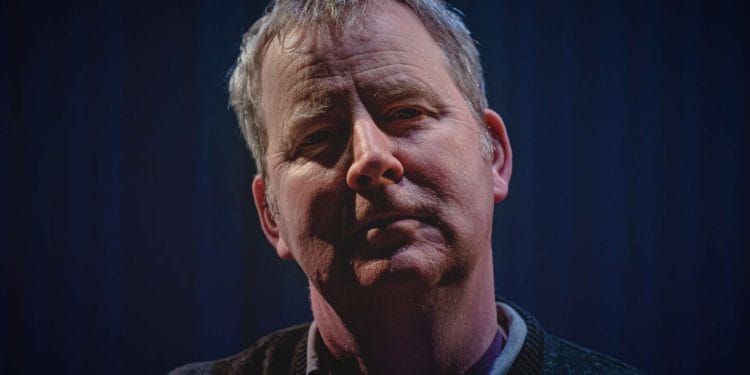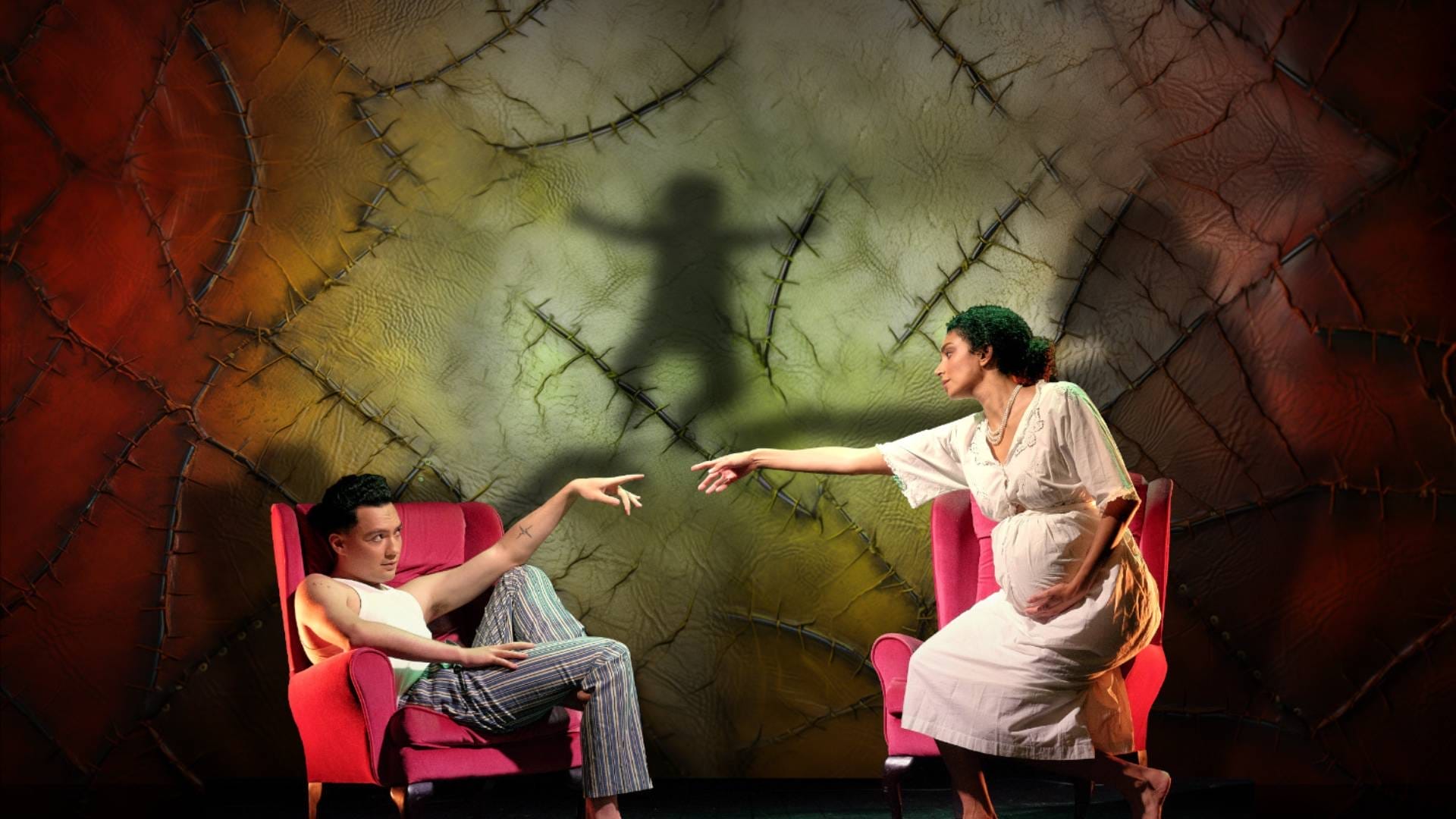Andrew Quick and Pete Brooks direct a radical new adaptation of Bram Stoker’s classic gothic horror novel. Dracula: The Untold Story, will bring audiences this enduring tale from the perspective of Mina Harker, the novel’s heroine.
The production combines cutting-edge digital technology with skilled live performance – a theatre technique that imitating the dog have made their own through acclaimed productions like Night of the Living Dead – Remix their 2020 co-production with Leeds Playhouse in which they lovingly recreated George A Romero’s cult zombie film frame-by-frame live on stage.
Written and directed by imitating the dog’s co-artistic directors Andrew Quick and Pete Brooks, Dracula: The Untold Story will open at Leeds Playhouse from 25 Sept – 9 Oct ahead of a UK tour. Full details can be found here.
You’re bringing us Dracula: The Untold Story, what can you tell us about the show?
The play starts on New Year’s Eve 1964 and is told through that night. A woman, claiming to be Mina Harker, hands herself into a London police station and admits that she killed somebody earlier that evening. The problem for the male and female police officers who question the woman is that she is clearly in her mid 20s and Mina, if she were still alive, would be in her 80s.
What we present is a kind of sequel to the original novel. We flash back to Bram Stoker’s version but what we really focus on is what Mina has been doing since Dracula’s supposed death in 1895. What we find out is that some vital elements were deliberately left out or written out in the original version and that Mina has been fighting Dracula in the intervening years.
In Bram Stoker’s version she is forced to drink Dracula’s blood in his attempt to convert Mina into a vampire. It’s implied in the novel that Mina is ‘saved’ from this fate, but we play with other possibilities and the audience is left to consider whether Mina is a vampire or not.
At its centre this Dracula is a good story, but there are complex questions that we hope are presented to the audience. A central question for us is what happens when you confront evil. If you try and defeat monsters, do you become a monster yourself. I think there are also questions around what happens when you take action, when you make a stand – in short what responsibility do you take for your action. This sounds heavy but these ideas are subtlety interwoven into our narrative.
What inspired you to tell the story from the perspective of Mina Harker?
Mina is a major character in the book, although it’s not obvious at first, but she’s the person who collates all the material. The original is written as a collection of texts, diaries, recordings, newspaper articles and so forth and it’s Mina who assembles all this material.
She’s the real storyteller although she’s not at the centre of the actual story itself. And this really interested us. We wondered if she’d left anything out, what her real attitude to Dracula was. And that got us thinking about the life she might have led after Dracula.
We didn’t think she would necessarily be the dutiful wife to Jonathan Harker. We know they had a son. So, we took these elements and made a kind of sequel. What happens next. And then we created a kind of superhero figure, but like many contemporary superheroes, she has a dark side. And we explore this in our story.
Why do you think your style of presenting live graphic novels appeals to audiences so much?
I think people like graphic novels because they are often bold ways of storytelling. You can get away with a lot in a graphic novel – big ideas, mad storylines, jumbling up history and fact, fiction and documentary. Audiences are now getting used to this way of storytelling.
It’s fast, loud, brassy if you like, sometimes in your face and I think audiences like this. This version of Dracula is our most graphic novel like – we really go into the form here. But you know, it’s still theatre. It’s presenting something in front of an audience, live, and that’s what we’re interested in. Taking the audience on a journey with us, exploring the ideas we hope they are also interested in. I think it’s a great story, but then I would say that, wouldn’t I? We’ve been battling with this text for a year now. I can’t wait to see what audiences make of it.
Tell us more about how digital technology is incorporated into the production?
We basically create a live graphic novel in front of the audience. We have a large wall/screen at the back of the stage and we project the actors live into panels on this wall as the story unfolds. The background is often moving or scrolling like the pages of a graphic novel. We also use face recognition technologies to manipulate documentary material. We can superimpose the actors’ faces with existing images. So for example we can bring a photograph of Mussolini to life. It’s crude but within the context of the graphic novel look it really works.
There’s often a contrast between what is happening on the stage and what’s happening on the screen. I think we really learned how interesting this was when we made Night of the Living Dead – Remix. What looks separate and in bits on the stage comes together beautifully on the screen.
What’s been the biggest challenge in bringing this production to the stage?
Dealing with the Covid. 19 situation has been a great challenge. We rehearsed this under strict social distancing rules – 2 meters apart at all times. It’s pretty restrictive. The technology helps us here. We can work in separate zones on the stage and create intimacy by bring the separate images together on the screen. But it’s hard to continually make this interesting. We’ll see how things relax or tighten up over the coming weeks, but this is the way we have had to make the show. It’s defined the approach really.
What would you say to anyone thinking of coming to see Dracula: The Untold Story?
If you think you know the story of Dracula – think again.
Dracula: The Untold Story premieres at Leeds Playhouse from 25 September till 9 Oct and then tours till 13 Nov
Leeds https://leedsplayhouse.org.uk/events/dracula-the-untold-story/


















Comments 2